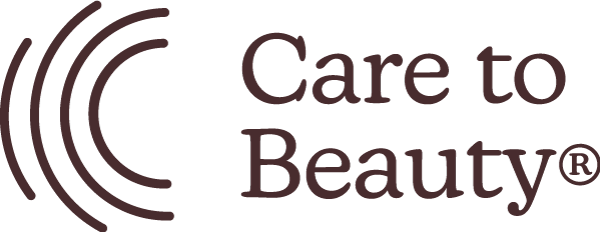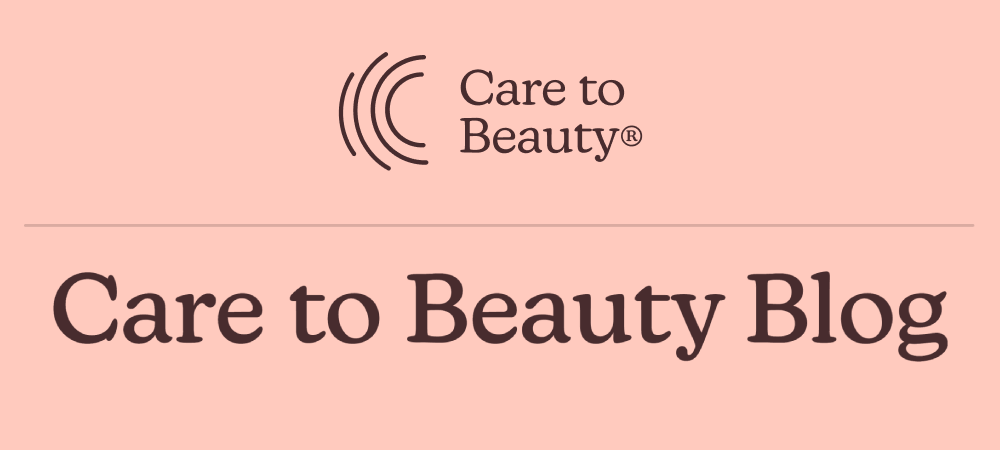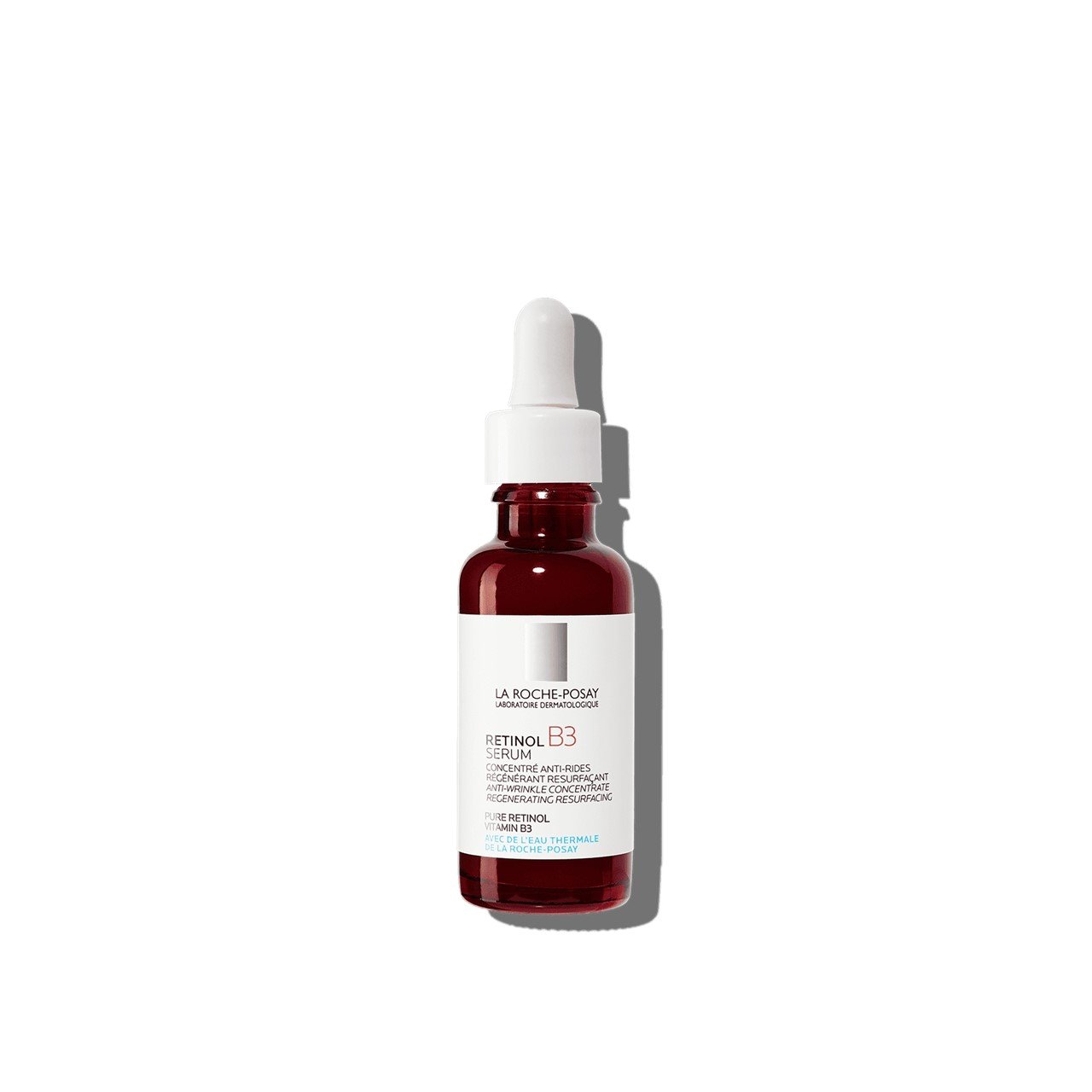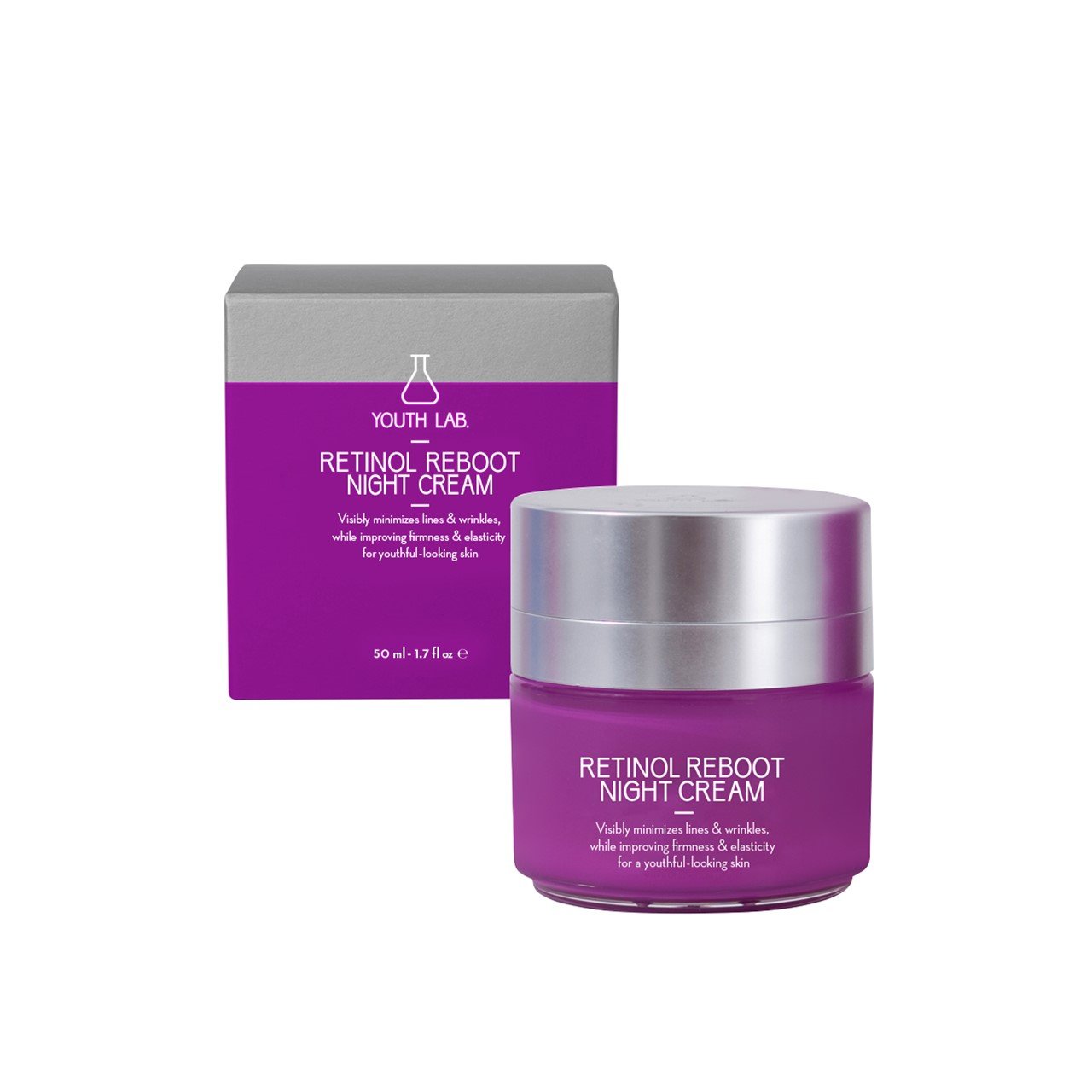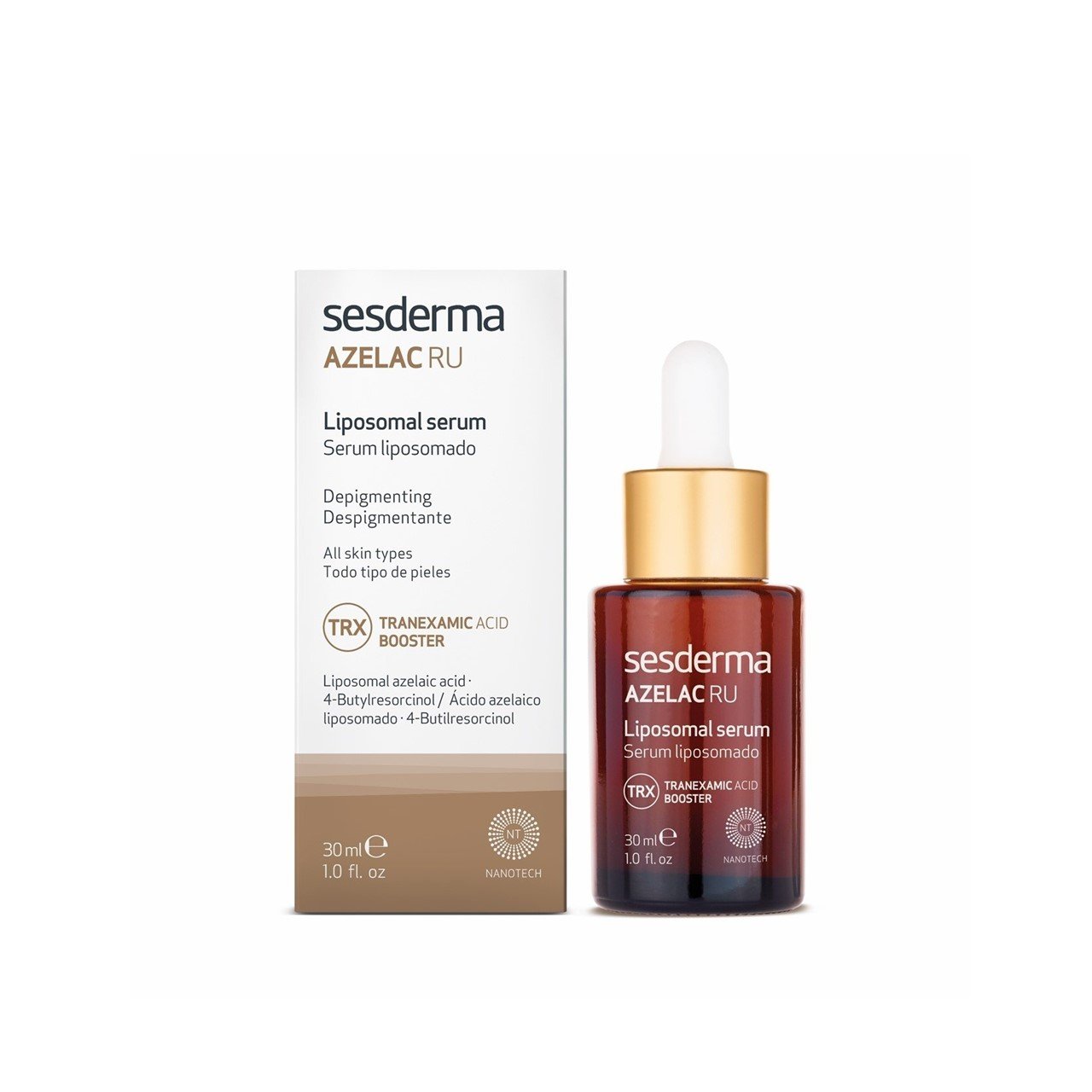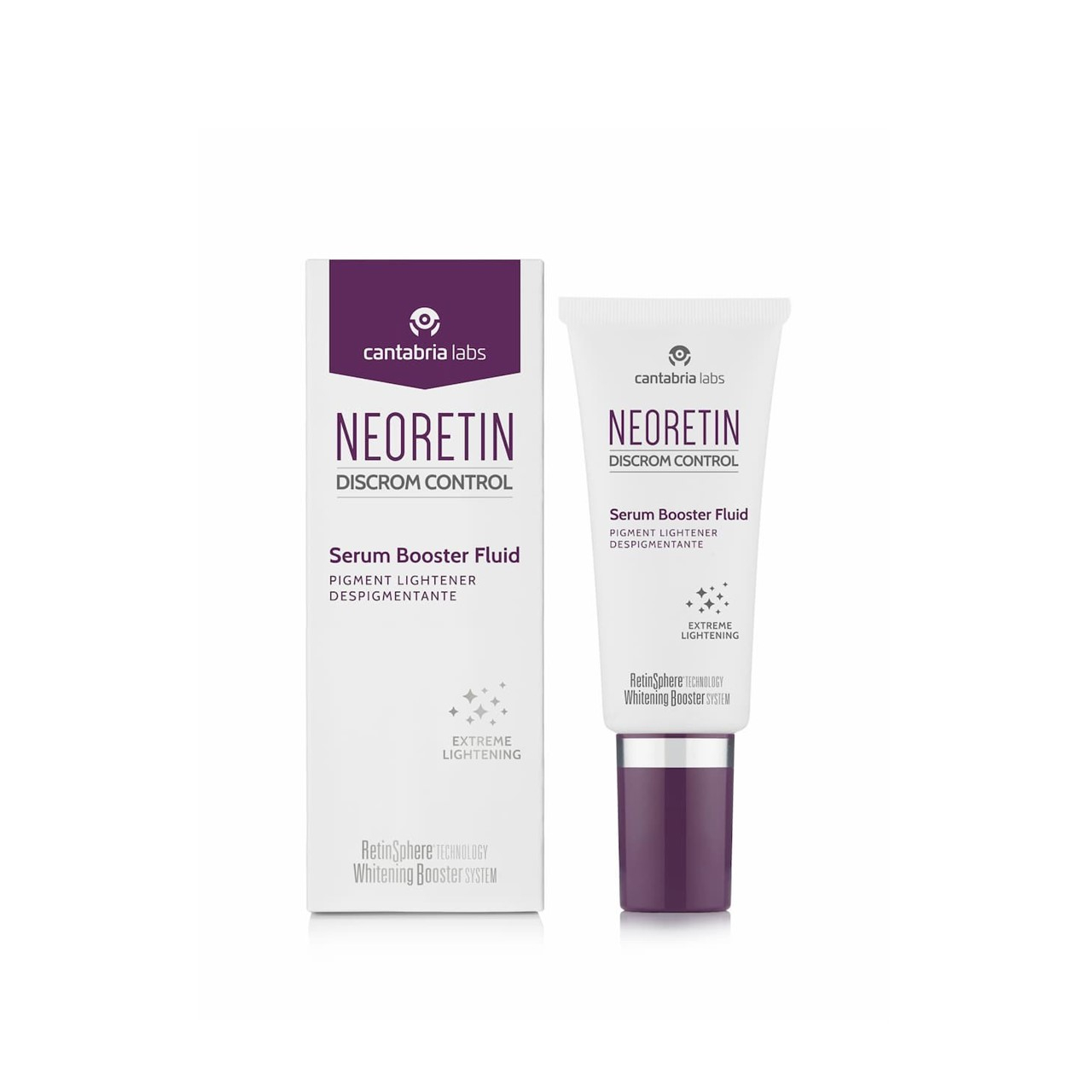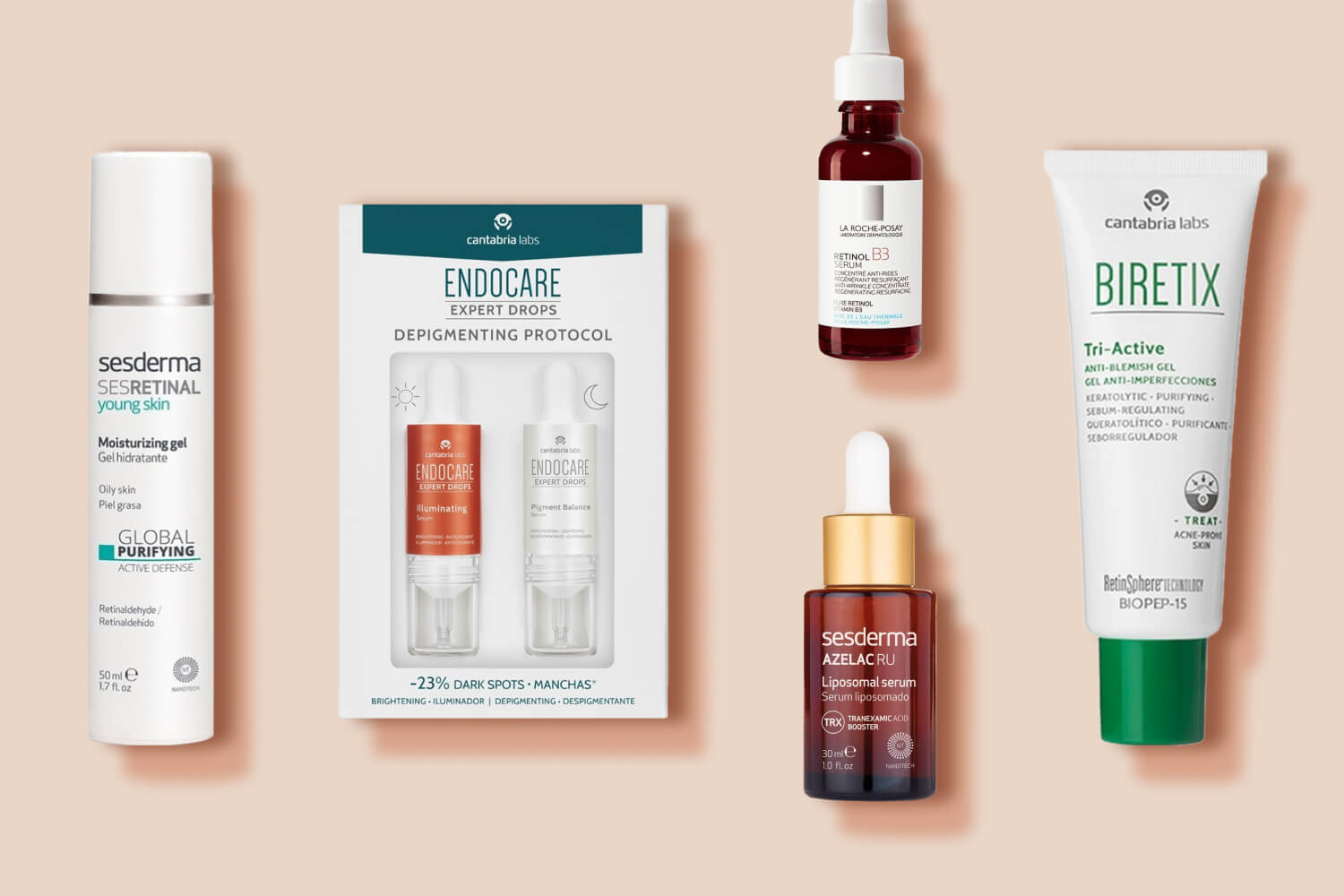
Retinol is one of the most talked about ingredients in the skincare world, and for good reason. It’s got anti-aging, anti-dark spot, and anti-acne benefits, and it might just be the ingredient you need to optimize your skincare routine once and for all. Today, we are going to do a deep dive and learn all about the main benefits of retinol for your skin.
On this post:
- What is retinol?
- How retinol benefits the skin
- Potential side effects of retinol
- Who should use retinol?
- How to use retinol in your skincare routine
- What kind of products contain retinol?
What is retinol?
Retinol is a form of vitamin A that features in many skincare products for its anti-aging, anti-dark spots, and anti-acne benefits. Retinol is a highly studied skincare ingredient, and is often regarded as the star active in fighting skin aging. Whether you’re an expert or an amateur when it comes to skincare knowledge, we’re sure you’ve heard of retinol.
That’s the short version.
Retinol versus retinoid
The long version is that retinol is just one of the many forms of vitamin A that are beneficial to the skin. The multiple forms are called “retinoids”, and they all share similar benefits, although they vary greatly in strength. Some retinoids you may have heard of include, from gentlest to strongest:
- Retinol esters (such as retinyl palmitate);
- Retinol;
- Retinaldehyde, aka retinal;
- Retinoic acid.
Of this list, retinoic acid is the only one that’s actually capable of binding directly to your skin (in short, it’s the only form that your skin can actually recognize and use). For this reason it is considered the “strongest” retinoid: its beneficial effects are faster and more visible, but its side effects are also more intense.
The other retinoids all need to be converted into retinoic acid to actually do anything to your skin. This conversion happens after you’ve applied the product, and it can happen in one or multiple steps. Take a look at the list above: the higher up the list a retinoid is, the more steps it’ll take to convert it into retinoic acid. Retinol esters, for example, are at the top: they need to turn into retinol and then retinaldehyde before turning into retinoic acid. That’s a 3-step conversion. Retinol itself needs two steps to convert, and retinaldehyde needs only one.
It’s this conversion that makes some retinoids so intense (we’ve all heard of “retinol burn”, right?), and others more suitable for sensitive skin. No two retinoids are the same, and it’s all down to the exact form used in each product. The quicker the conversion, the more effective the retinoid–but the greater the risks of experiencing side effects.
How retinol benefits the skin
Retinol (and other retinoids) bring multiple benefits to the skin. Retinol is the star ingredient in anti-aging, the gold standard, and has the ability to minimize fine lines and wrinkles while refining the texture and grain of the skin. Alongside these anti-aging benefits, retinol also brings lightening benefits, which can be useful both in combating aging spots and in combating dark spots of other origins (including melasma). Finally, retinol is a very effective ingredient in the fight against acne, where its texture-refining benefits also come in handy.
It has anti-aging benefits
Retinol is best known for its anti-aging benefits–in fact, it is the most trusted skincare ingredient for for the prevention and correction of signs of aging. Retinol achieves these results through its relationship with collagen in the skin. On the one hand, retinol is able to decrease the activity of enzymes that break down collagen over time; on the other hand, it is able to promote collagen synthesis in the skin. Together, these effects help to reduce fine lines and wrinkles and promote firmer, more supple skin, for fewer visible signs of aging.
The other important effect of retinol is that it improves the texture of the skin, promoting a smoother and more even look. This is due to the fact that retinol promotes epidermal cell turnover–aka, the renewal of skin cells in the epidermis, the topmost layer of the skin.
It brightens the skin
We’ve mentioned that retinol increases epidermal cell turnover. Not only does this promote a smoother skin texture, it also helps minimize the appearance of dark spots and hyperpigmentation. Although this is not the main benefit of retinol, it is a benefit that can be leveraged in routines that want to target both signs of aging and age spots.
Indeed, retinol is often included in brightening skincare products, since it offers an alternative mechanism of action that complements more typical anti-dark spot ingredients like azelaic, kojic, or tranexamic acid.
It minimizes acne
Retinol may be mostly associated with fighting signs of aging, but the fact is that retinol is also a very effective ingredient in fighting acne. In acne-prone skin, retinol contributes by normalizing keratinization (i.e. it prevents dead cells from accumulating inside the pores and forming “plugs” that later turn into acne spots). This prevents the formation of new pimples and helps reduce existing ones. At the same time, retinol may also have an anti-inflammatory action, which which helps minimize the inflammation associated with acne. Finally, retinol also plays a role in reducing sebum production, which is useful for acne-prone skin that struggles with excess sebum.
Potential side effects of retinol
Retinol and retinoids in general are infamous for causing side effects. One of the most common side effects is feeling some extra dryness in the skin (this can feel “okay” if you have oily skin, but it’s highly disruptive if you have dry skin). Besides dryness, redness, irritation, and skin flaking (what’s often called a “retinol burn”) are also common side effects of retinol. Last, but not least, you may experience burning, stinging, and tingling.
These side effects all sound very scary, but they’re a telltale sign that you should take a step back and reevaluate your retinol usage. The best way to avoid retinol side effects is to start slow. We’ll tell you how in a second (just scroll down to the section “how to use retinol in your skincare routine”). Slow and steady is key here; otherwise, retinol overuse may damage your skin barrier and put you off using this ingredient for good.
Retinol and sun exposure
There is some confusion about the interaction between retinol and sun exposure, but let’s get this bit out of the way first: if you’re using retinol, you’ve got to wear sunscreen too.
There are two reasons for this: the first has to do with the actual benefits you’re hoping to get from retinol. If you are using retinol to combat signs of aging or dark spots, then you should know that the sun is one of the main causes of skin aging. If you are using retinol to reverse signs of aging, but then go out in the sun, you are reversing any benefit that retinol can bring you. That’s the first reason.
The second reason that justifies the use of sun protection is related to the sensitivity of your skin. Retinol is not photosensitizing–that is, it doesn’t increase your skin’s sensitivity to sunlight. However, it can increase your skin’s sensitivity overall–in fact, sensitivity and redness are common side effects of retinol use. Knowing that retinol can make your skin more sensitive overall, it’s a good idea not to trigger that sensitivity with sun exposure–and especially excessive sun exposure. This is the second reason for the importance of using sunscreen.
Now, let’s go back to that photosensitizing detail: retinol is not photosensitizing and will not increase your sensitivity to the sun, but it is itself photosensitive. This means that, with sun exposure, your product will break down and lose efficacy. It is for this reason that you’re often told to use retinol at night.
Retinol and pregnancy
Retinol is one of the few skincare ingredients that we will categorically tell you not to use during pregnancy. This is especially true for anyone taking oral retinoids, but it also holds true for skincare products applied topically, directly to the skin. Retinol has been associated with congenital disorders in the past, and although we are not fully sure of the strength of these associations, it’s better to err on the side of caution during pregnancy.
So, make sure to avoid retinol and retinoids in general during pregnancy. In case of doubt, speak to your doctor and healthcare provider; they’ll be better equipped to answer your questions in relation to your specific case.
Who should use retinol?
Retinol is a highly effective ingredient, but one that is also prone to unpleasant side effects. Knowing this, the most important thing when using retinol is to ensure that you are going to use it carefully.
Retinol is a star ingredient in anti-aging care, so it can be recommended to anyone wanting to prevent or correct the signs of aging. It is also useful for those who want to reduce dark spots and hyperpigmentation, but it is not the star ingredient for these situations–ideally, you will always combine retinol with a brightenong ingredient, such as azelaic, kojic, or tranexamic acid. The good news is that there are products that already do this combination for you!
Finally, retinol is an effective acne-fighting ingredient, and can be used in both adolescence and adulthood.
How to use retinol in your skincare routine
If you’re just starting out with retinol, it can seem like you need a whole handbook to learn how to use this ingredient in your routine. However, it’s not quite like that! Here are the main tips you should take into account:
- Use your retinol at night (because, as stated above, retinol is photosensitive);
- Ease your way into it. Start using your product in the evening, 2 or 3 times a week, for about two weeks. Then, evaluate the state of your skin. If you’re not experiencing any side effects, feel free to start using retinol more regularly. If you’re dealing with some irritation, space out the applications or pause them altogether until your skin has recovered;
- Follow your retinol with a good moisturizer. Retinol can be drying to the skin, so keep a simple moisturizer handy in case you need to replenish your skin.
As for the rest of your skincare routine, our general recommendation is to keep things simple when you’re first starting out with retinol use. However, that doesn’t mean you have to forgo all other active ingredients. Indeed, retinol can play well with a variety of other star ingredients, such as niacinamide, peptides, or even vitamin C.
Retinol cream vs serum
When you are starting to use retinol in your skincare routine, you may be in doubt about whether it is better to use a retinol cream or retinol serum. The truth is that it depends on your preference, but both have advantages.
Serums tend to have higher concentrations of the active ingredient, in this case retinol. They have lighter textures, which tend to absorb quicker and leave less residue, leaving the skin feeling lighter. If you have oily skin, a retinol serum might be the best option for you. If you have dry skin, of course you can also use a retinol serum, but it is likely that your skin will suffer from dryness more quickly and you will end up needing an extra cream to replenish your skin.
As for creams, their main advantage is implied: if you have dry skin, using a cream with retinol can help you combat some of the dryness that tends to affect your skin after using retinol. Likewise, your preference in terms of textures can influence your choice; if you prefer richer textures, a cream will always be the best option for you. If you have mature skin, for example, using a cream could be more advantageous than a serum, as it will immediately help you keep your skin more hydrated and well-balanced.
What kind of products contain retinol?
Retinol for anti-aging
Since retinol is such a popular anti-aging ingredient, you won’t have any trouble finding it in anti-aging formulas. it’s available in serums, creams, and even oils, depending on your texture preferences and skin type. In serums, we like the La Roche-Posay Retinol B3 Serum, a serum with retinol and niacinamide, formulated for sensitive skin. In terms of creams, we like the YOUTH LAB Retinol Reboot Night Cream, a night cream that uses retinaldehyde and a new-generation retinoic acid ester to achieve effective results against fine lines, wrinkles and loss of firmness.
Retinol for dark spots and hyperpigmentation
Retinol also has anti-dark spot benefits, and it is common to find it combined with more specialized ingredients in brightening formulas. A good example of this is the Sesderma Azelac RU Liposomal Depigmenting Serum, a bestselling anti-dark sport serum that targets hyperpigmentation through a combination of azelaic acid, retinol, and vitamin C. Neoretin Discrom Control Serum Booster Fluid, including RetinSphere technology at 1% and 12.8% Whitening Booster System, is packed with depigmentation actives that help work hard to reduce dark spots and hyperpigmentation.
Retinol for acne
Retinol is a highly effective acne-fighting ingredient and, as we’ve seen, can be used in both adolescence and adulthood. Of the anti-acne products with retinol, we can highlight the Biretix Tri-Active Anti-Blemish Gel, a daily use product that not only helps control sebum production and minimize imperfections, but also helps prevent the first signs of aging with a combination of retinol, peptides, and glycolic acid. For teenage skin, we can suggest the ISDIN Oily Skin Acniben 2 Night Concentrate Anti-Blemish Serum, a product with retinaldehyde, niacinamide, and zinc PCA acid that helps keep teenage skin balanced against acne breakouts.
Now that you know how retinol works, what benefits it has for your skin, and what products you can find it in, you’re ready to integrate this star ingredient into your skincare routine. Remember: start slow and steady, and you’ll get the results you want. Make sure to check out our favorite retinol products to pick your favorite!
Beauty Writer & Editor
